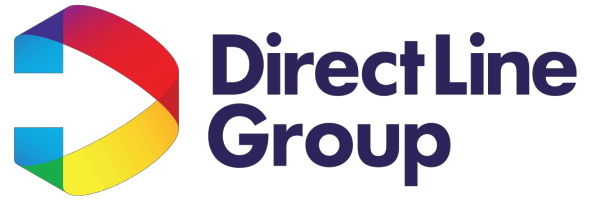Improving the understanding of risk
The UK’s largest home and motor insurer relies on Esri GIS technology to help it make more informed decisions when underwriting insurance policies in its commercial property division, NIG. The use of GIS gives Direct Line Group a better understanding of actual risk factors at individual properties, so it can price policies more accurately and profitably.
The Customer
Direct Line Group (DLG) is the UK’s largest home and motor insurer, consisting of several well-known brands including Direct Line, Churchill and Privilege. The brand also includes NIG, one of the country’s leading providers of business insurance offered exclusively through insurance brokers.
Increased granularity of risk intelligence means that underwriters can be more selective about what business NIG takes on, improving profitability
The organisation can give customers more accurate quotes and deal with more complex customer requirements, leading to added business wins
The marketing department makes use of the GIS to implement targeted marketing campaigns and offer discounts to low risk prospects
The Challenge
DLG’s primary objective was to improve its assessment of risk when writing business within in its commercial property division NIG, to be achieved through more accurate pricing and better control of accumulations of risk.
The main catalyst for the GIS project was the UK floods in 2007. The devastating events signalled the need for DLG to have a better understanding of the risks they were writing.
Previous risk assessment relied upon postcode level or district segmentation, while the data needed for writing business was gathered from multiple sources. Underwriters had to move from mainframe system to rating table, and from claims records to the Environment Agency website; to assess the risk of a piece of business. In addition, data was presented in a traditional non-spatial format as numbers on a page.
“The business case for a new Geospatial system was all about improving the risk of our commercial portfolio to reduce the level of claims and run a more profitable business. To achieve this we needed to improve upon the precision offered from using a postcode level of rating,” explained Richard Jones, Head of DLG’s Geospatial Unit.
Our goal was to develop a new system with the industry’s most powerful GIS, to provide greater insight to the business we write and therefore improve our understanding of risk
Richard Jones – Head of Geospatial Unit at Direct Line
The Solution
DLG needed a powerful GIS platform at the heart of its new approach and after a rigorous review process selected Esri UK as its GIS provider.
“Our goal was to develop a new system with the industry’s most powerful GIS, to provide greater insight to the business we write and therefore improve our understanding of risk,” said Jones. “We wanted to be able to differentiate between individual properties on the same street and allow a higher level of interaction with more data, enabling users to drill into maps and view contextual information simultaneously.”
Now DLG can examine a map showing a property anywhere in the UK to assess risk in terms of fire, flood, subsidence, theft or windstorm, with the ability to include additional perils as required.
“Esri UK developed both aspects of our new Geospatial system – the back-end analysis tool plus the front-end underwriter interface Risk Explorer,” said Jones. “The Esri team also developed the geocoding process to convert postal addresses into co-ordinates, which allows the market leading address point risk assessment to be carried out.”
With Risk Explorer, DLG underwriters now have all the information they need in one place, which enhances the whole underwriting process, as Jones explained: “Using the new Esri interface, staff can now visualise what the data is telling them. They don’t have to interpret a series of postcode tables with associated loadings. Underwriters now interact with a map, see where the property is at an address level, and view all of its related contextual information including perils, local points of interest, loadings, discounts and accumulations.”
We’re confident we can identify the level of risk more accurately than our competition and this ultimately means a more profitable business
Richard Jones – Head of Geospatial Unit at Direct Line
The Benefits
By moving from postcode level risk assessment to address level, Geospatial has taken DLG’s understanding of risk another step forward. Primarily concerned with matching price to risk for the commercial division, the models created in ArcGIS are also being used in some Personal Lines pricing. Other insurers might not be aware of the risk and therefore price business at the wrong point, taking on the customer at an unprofitable level.
“Geospatial gives customers more accurate prices, provides our underwriters with a wider range of information and shows reinsurers a more detailed picture of our portfolio risk,” summarised Jones. “The increased granularity of risk intelligence means business is being priced more accurately and consistently and underwriters can be smarter about what business we take on board.”
The system also offers the ability to generate multiple quotes on more than one property in a single action, which gives a vastly improved ability to deal with more complex quotes. Through this, DLG has successfully secured some large new business accounts that previously it would not have been able to compete for.
Geospatial is also adding value in ways that were not thought of initially. Marketing are applying the insight to develop more targeted campaigns, with discounts offered to those who may now pose less of a risk to others. DLG is confident that other insurers who don’t have the same level of intelligence will not be able to offer the same competitive but profitable price.
Another added benefit is when DLG have to model the impact of fictitious scenarios on its portfolio, set by the FSA (Financial Services Authority). Previously this would be hard to do, but now a more scientific approach is applied to demonstrate how a disastrous event would impact their exposure.
By pricing risk at an address level instead of postcode, Geospatial is helping DLG run a more profitable business. It supports both the writing of larger volumes of profitable good risk business and avoidance of writing unprofitable poor risks. Geospatial is now established as an invaluable tool for the underwriting community.



